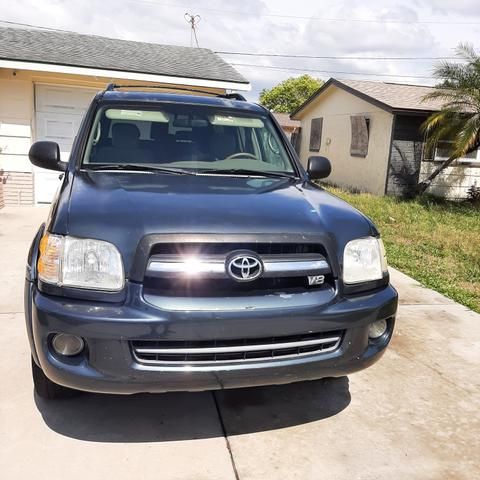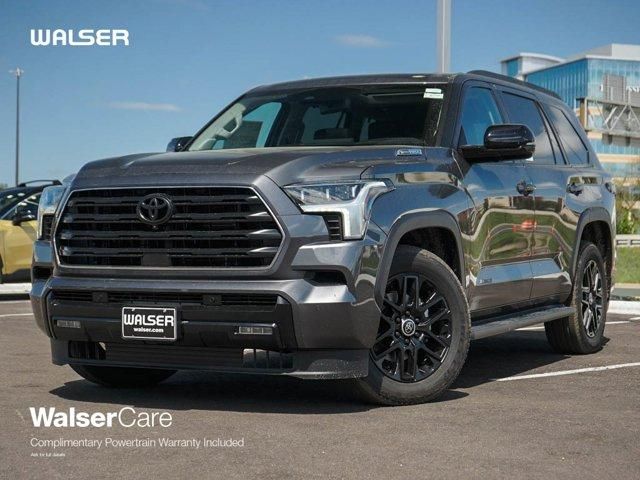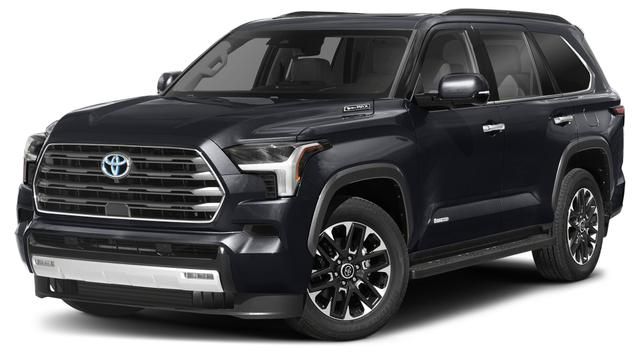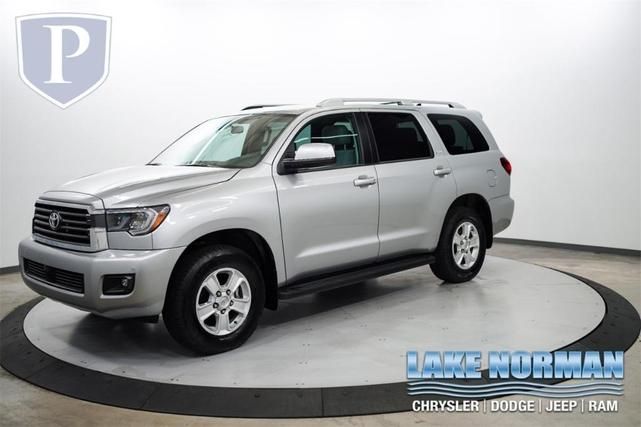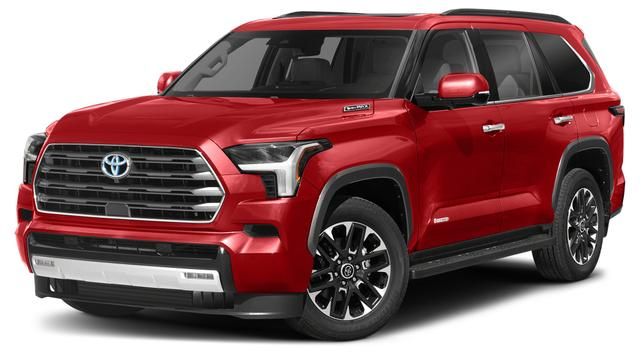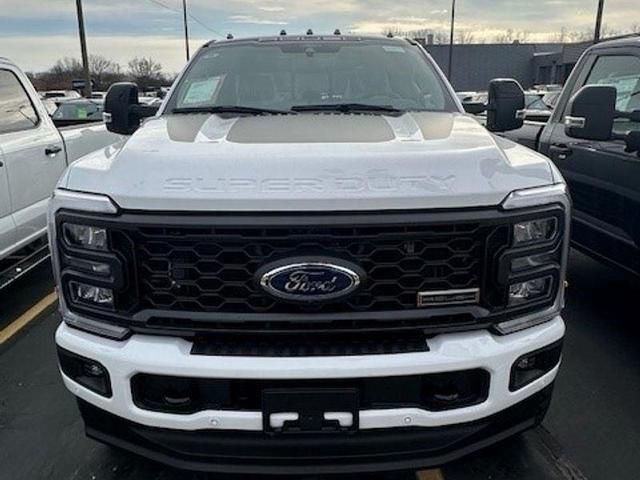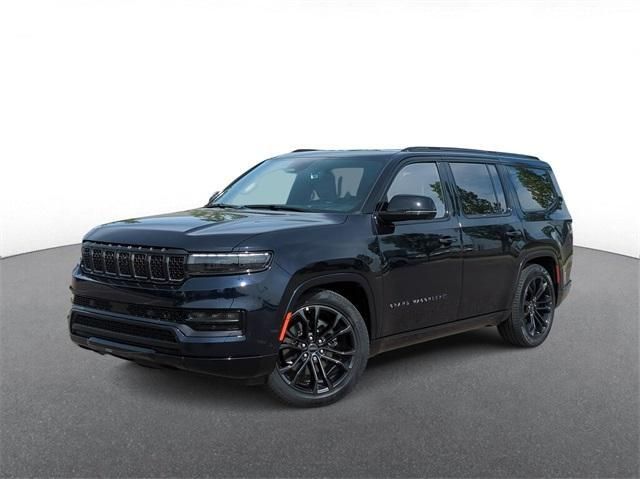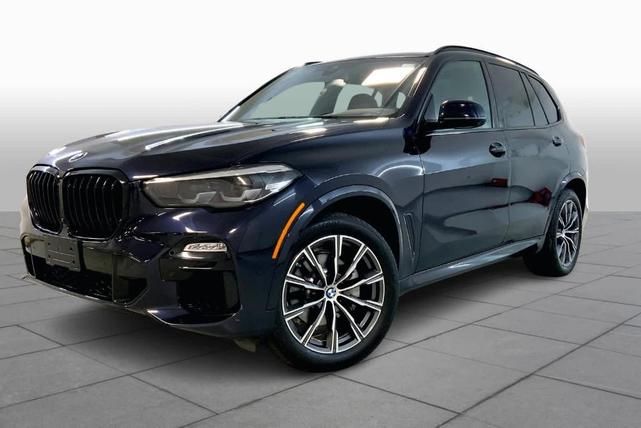
2020 TOYOTA SEQUOIAVIN: 5TDDY5G10LS177686
Historical Records
Damage to right rear
Damage to rear
MILEAGE INCONSISTENCY
| Year | 2020 |
| ODO | 1450 mi |
| Seller | Hidden text (Hidden text) |
| MSRP | $4769 |
| Location | Henderson, NC, 27537 |
| Date | appeared 10 months ago latest price $6655 sale post disappeared 2019-10-27 |
| Sale Website Type | classifieds |
| Notes | |
| Hidden text | |



| Body Style | SUV |
| Color | White |
| Color (Interior) | Graphite |
| Transmission | 6-Speed Automatic |
| Engine | 5.7L V8 32V MPFI DOHC |
| Drive | Four-wheel Drive |
| Fuel Type | Gasoline |
- 4-wheel ABS Brakes
- Hidden text
- Air Conditioning
- Hidden text
- Auto-Dimming Door Mirrors
- Hidden text
- Braking Assist
- Hidden text
- Curb weight: 6,000 lbs.
- Hidden text
- Driver and passenger knee airbags
- Hidden text
- Electronic stability control
- Hidden text
- Front Anti-Roll Bar
- Hidden text
- Front Shoulder Room: 66.4"
- Hidden text
- Garage Door Transmitter: Homelink
- Hidden text
- Heated passenger mirror
- Hidden text
- Leather seat upholstery
- Hidden text
- Memory Seat
- Hidden text
- Overhead console: Mini with storage
- Hidden text
- Power Passenger Seat
- Hidden text
- Rear air conditioning
- Hidden text
- Rear window wiper
- Hidden text
- Remote Keyless Entry
- Hidden text
- SiriusXM AM/FM/HD/Satellite Radio
- Hidden text
- Steering Wheel Memory
- Hidden text
- Total Number of Speakers: 15
- Hidden text
- Video Monitor Location: Front and rear
- Hidden text
- 4-Wheel Disc Brakes
- Hidden text
- Adaptive Cruise Control
- Hidden text
- Auto Tilt-Away Steering Wheel
- Hidden text
- Brake Assist
- Hidden text
- Cruise controls on steering wheel
- Hidden text
- Driver And Passenger Heated-Cushion, Driver And Passenger Heated-Seatback
- Hidden text
- Electrochromatic rearview mirror
- Hidden text
- Four-wheel independent suspension
- Hidden text
- Front reading lights
- Hidden text
- Fully Automatic Headlights
- Hidden text
- Heated driver mirror
- Hidden text
- Leather Steering Wheel
- Hidden text
- Memorized Settings including steering wheel
- Hidden text
- Overhead console
- Hidden text
- Power Moonroof
- Hidden text
- Radio: Premium Audio w/Nav/JBL/Clari-Fi
- Hidden text
- Rear Window Defroster
- Hidden text
- Remote Engine Start : Remote Engine Start - Smart device only
- Hidden text
- Simulated wood/metal-look dash trim
- Hidden text
- Steel spare wheel rim
- Hidden text
- Tire Pressure Monitoring System
- Hidden text
- Ventilated Front Seats
- Hidden text
- 15 Speakers
- 1692
- AM/FM radio: SiriusXM
- Hidden text
- Audio controls on steering wheel
- Hidden text
- Auxilliary engine cooler
- Hidden text
- Clock: In-dash
- Hidden text
- Driver Door Bin
- Hidden text
- Dual reverse tilt mirrors
- Hidden text
- External temperature display
- Hidden text
- Front Heated & Ventilated Bucket Seats
- Hidden text
- Fuel Consumption: City: 13 mpg
- Hidden text
- Heated Door Mirrors
- Hidden text
- Integrated Navigation System : with voice activation
- Hidden text
- Max cargo capacity: 120 cu.ft.
- Hidden text
- Overall Width: 79.9"
- Hidden text
- Power Door Mirrors
- Hidden text
- Power retractable mirrors
- Hidden text
- Rear seat center armrest
- Hidden text
- Rear spoiler: Lip
- Hidden text
- Security System
- Hidden text
- Split folding rear seat
- Hidden text
- Telescoping Steering Wheel
- Hidden text
- Varia
- Hidden text
- Wheels: 20 x 8 Diamond-Cut Finish Alloy
- 3613
- ABS Brakes
- Hidden text
- Anti-Theft Alarm System
- Hidden text
- Automatic Temperature Control
- Hidden text
- Cargo area light
- Hidden text
- Digital Audio Input
- Hidden text
- Dual front side impact airbags
- Hidden text
- Entune
- Hidden text
- Front Dual Zone A/C
- Hidden text
- Front and rear suspension stabilizer bars
- Hidden text
- Headlight cleaners with washer
- Hidden text
- Independent front suspension classification
- Hidden text
- Low Tire Pressure Warning
- Hidden text
- Occupant Sensing Airbag
- Hidden text
- Passenger Door Bin
- Hidden text
- Power remote trunk release
- Hidden text
- Rear Hip Room: 59.9"
- Hidden text
- Rear heat ducts with separate controls
- Hidden text
- Roof Rack
- Hidden text
- Speed Sensitive Audio Volume Control
- Hidden text
- Surround Audio
- Hidden text
- Trip Computer
- Hidden text
- Wheel Diameter: 20
- 6105
- A/V Remote
- Hidden text
- Alloy Wheels
- Hidden text
- Auto-Leveling Suspension
- Hidden text
- Bumpers: Body-Color
- Hidden text
- Delay-Off Headlights
- Hidden text
- Dual Front Impact Airbags
- Hidden text
- Entertainment System
- Hidden text
- Front Center Armrest
- Hidden text
- Front and rear reading lights
- Hidden text
- Headlight Cleaning
- Hidden text
- Illuminated entry
- Hidden text
- Leather/simulated wood steering wheel trim
- Hidden text
- Navigation system: Dynamic Navigation with up to 3-year trial
- Hidden text
- Passenger Airbag
- Hidden text
- Power Liftgate
- Hidden text
- Rear Head Room: 34.9"
- Hidden text
- Rear buckets
- Hidden text
- Remote power door locks
- Hidden text
- Speed control
- Hidden text
- Sun Blinds
- Hidden text
- Trailer Hitch
- Hidden text
- Voltmeter
| Year | 2020 |
| ODO | 7602 mi |
| Condition | Hidden text |
| Seller | Hidden text |
| Location | Henderson, NC, 27537 |
| Date | appeared 10 months ago latest price $4736 |
| Sale Website Type | classifieds |
| Notes | |
| Hidden text | |



| Body Style | SUV |
| Color | White |
| Color (Interior) | Gray |
| Transmission | Automatic |
| Engine | 5.7 L |
| Cylinders | 8 Cyl |
| Drive | 4WD |
| Fuel Type | Gasoline |
- 20 Inch Wheels
- Hidden text
- Alloy Wheels
- Hidden text
- Cooled Seats
- Hidden text
- Luggage Rack
- Hidden text
- Trailer Hitch
- Hidden text
- 15 Speakers
- 6497
- 3rd Row Split/Folding Seats
- 6337
- 4-Wheel Independent Suspension
- 2042
- AM/FM
- Hidden text
- Adaptive Cruise Control
- Hidden text
- Adjustable 3rd Row Seats
- Hidden text
- Air Conditioning
- Hidden text
- Anti-Lock Brakes
- Hidden text
- Apple Carplay
- Hidden text
- Auto Climate Control
- Hidden text
- Auto-Dimming Mirror
- Hidden text
- Aux Audio Adapter
- Hidden text
- Braking Assist
- Hidden text
- Child Safety Locks
- Hidden text
- Compass
- Hidden text
- Daytime Running Lights
- Hidden text
- Door Bin
- Hidden text
- Dual-Zone Climate Control
- Hidden text
- Engine Immobilizer
- Hidden text
- Front Airbags (Passenger)
- Hidden text
- Front Bench Seat
- Hidden text
- Front Center Armrest
- Hidden text
- Front Knee Airbags (Driver)
- Hidden text
- Front Side Airbags (Passenger)
- Hidden text
- HD Radio
- Hidden text
- Headlight Washers
- Hidden text
- Heated Seats
- Hidden text
- High-Beam Assist
- Hidden text
- Integrated Garage Door Opener
- Hidden text
- JBL Sound System
- Hidden text
- Keyless Ignition
- Hidden text
- Lane Departure Warning
- Hidden text
- Leather Steering Wheel
- Hidden text
- Limited Slip Differential
- Hidden text
- Memory Mirrors
- Hidden text
- Navigation System
- Hidden text
- Overhead Console
- Hidden text
- Passenger Sensing Airbag
- Hidden text
- Power Folding Mirrors
- Hidden text
- Power Locks
- Hidden text
- Power Seat (Dual)
- Hidden text
- Power Sun/Moonroof
- Hidden text
- Privacy Glass
- Hidden text
- Rear Air Conditioning
- Hidden text
- Rear Bucket Seats
- Hidden text
- Rear Head Airbags
- Hidden text
- Rear Parking Sensors
- Hidden text
- Rear Window Defroster
- Hidden text
- Rear-View Camera
- Hidden text
- Remote Start
- Hidden text
- Roof Rack
- Hidden text
- Satellite Radio
- Hidden text
- Smart Device Integration
- Hidden text
- Split/Folding Seats
- Hidden text
- Stability Control
- Hidden text
- Steering Wheel Memory
- Hidden text
- Telematics System
- Hidden text
- Tire Pressure Monitoring System
- Hidden text
- Traction Control
- Hidden text
- Turn Signal Mirrors
- Hidden text
- Vanity Mirror/Light
- Hidden text
- Wood Trimmed Interior
Model Analytics & Market Report
Depreciation
| Year | Average Mileage | Average Price | % Left | % Lost | ||
|---|---|---|---|---|---|---|
| 2020 MSRP | 0 mi | $66,120 | — | — | 100% | 0% |
| 2020 | 13,037 mi | $79,928 | −$13,808 | −20.88% | 120.88% | -20.88% |
| 2021 | 26,074 mi | $75,831 | +$4,097 | +5.13% | 114.69% | -14.69% |
| 2022 | 39,111 mi | $51,411 | +$24,420 | +32.2% | 77.75% | 22.25% |
| 2023 | 52,148 mi | $53,990 | −$2,579 | −5.02% | 81.65% | 18.35% |
| 2024 | 65,185 mi | $49,999 | +$3,991 | +7.39% | 75.62% | 24.38% |
| → Visit 2020 TOYOTA SEQUOIA depreciation page to see full data. | ||||||
Price vs Mileage
| Mileage | Average Price | Sample Size |
|---|---|---|
| 0 mi | $62,535 | 79 sales |
| 5,000 mi | $63,251 | 332 sales |
| 10,000 mi | $63,591 | 628 sales |
| 15,000 mi | $63,990 | 727 sales |
| 20,000 mi | $63,500 | 603 sales |
| 25,000 mi | $61,339 | 636 sales |
| → Visit 2020 TOYOTA SEQUOIA depreciation page to see full data. | ||
VIN Decoder — 59 records
Anti-lock Braking System (ABS) means a portion of a service brake system that automatically controls the degree of rotational wheel slip during braking by: (1) Sensing the rate of angular rotation of the wheels; (2) Transmitting signals regarding the rate of wheel angular rotation to one or more controlling devices that interpret those signals and generate responsive controlling output signals; and (3) Transmitting those controlling signals to one or more modulator devices that adjust brake actuating forces in response to those signals.
An auto-reverse system enables power windows and sunroofs on motor vehicles to automatically reverse direction when such power windows and panels detect an obstruction. This feature can prevent children and others from being trapped, injured, or killed by the power windows and sunroofs.
ESC is a computerized technology that improves a vehicle's stability by detecting and reducing loss of traction (skidding). When ESC detects loss of steering control, it automatically applies the brakes to help steer the vehicle in the driver's intended direction. Braking is automatically applied to wheels individually, such as the outer front wheel to counter oversteer, or the inner rear wheel to counter understeer. Some ESC systems also reduce engine power until control is regained.
A keyless ignition system permits starting a car without a physical key being inserted into an ignition. Instead, a small device known as a "key fob" transmits a code to a computer in the vehicle when the fob is within a certain close range. When the coded signal matches the code embedded in the vehicle's computer, a number of systems within the car are activated, including the starter system. This allows the car to be started by simply pressing a button on the dashboard while the key fob is left in a pocket or a purse. The vehicle is usually shut down by pushing the same button.
A TPMS is an electronic system designed to monitor the air pressure inside the pneumatic tires on various types of vehicles. TPMS can be divided into two different types - direct and indirect. Direct TPMS employ pressure sensors on each wheel, either internal or external. The sensors physically measure the tire pressure in each tire and report it to the vehicle's instrument cluster or a corresponding monitor. Indirect TPMS does not use physical pressure sensors but measure air pressures by monitoring individual wheel rotational speeds and other signals available outside of the tire itself.
When the traction control computer detects a driven wheel or wheels spinning significantly faster than another, it invokes an electronic control unit to apply brake friction to wheels spinning due to loss of traction. This braking action on slipping wheels will cause power transfer to the wheels with traction due to the mechanical action within the differential.
A backup camera, also known as a rearview video system, helps prevent back-over crashes and protects our most vulnerable people - children and senior citizens - by providing an image of the area behind the vehicle. A backup camera helps the driver see behind the vehicle while in reverse.
A CIB system is an automatic emergency braking system designed to detect an impending forward crash with another vehicle. CIB systems automatically apply the brakes in a crash imminent situation to slow or stop the vehicle, avoiding the crash or reducing its severity, if the driver does not brake in response to a forward collision alert.
A DBS system is an automatic emergency braking system designed to detect an impending forward crash with another vehicle. DBS systems automatically supplement the driver's braking in an effort to avoid a crash if the driver does not brake hard enough to avoid it.
An FCW system monitors a vehicle's speed, the speed of the vehicle in front of it, and the distance between the vehicles. If the vehicles get too close due to the speed of either vehicle, the FCW system will warn the driver of the rear vehicle of an impending crash so that the driver can apply the brakes or take evasive action, such as steering, to prevent a potential crash. FCW systems provide an audible, visual, or haptic warning, or any combination thereof, to alert the driver of an FCW-equipped vehicle of a potential collision.
BSW alerts drivers with an audio or visual warning if there are vehicles in adjacent lanes that the driver may not see when making a lane change.
An LDW system monitors lane markings and alerts the driver if their vehicle drifts out of their lane without a turn signal or any control input indicating the lane departure is intentional. An audio, visual or other alert warns the driver of the unintentional lane shift so the driver can steer the vehicle back into its lane.
ADB is a type of front-lighting system that lets upper beam headlamps adapt their beam patterns to create shaded areas around oncoming and preceding vehicles to improve long-range visibility for the driver without causing discomfort, distraction, or glare to other road users.
DRL is an automotive lighting system on the front of a vehicle or bicycle, that automatically switches on when the vehicle is in drive, and emits white, yellow, or amber light to increase the conspicuity of the vehicle during daylight conditions.
A semi-automatic headlamp beam switching device provides automatic or manual control of beam switching at the option of the driver. When the control is automatic, the headlamps switch from the upper beam to the lower beam when illuminated by the headlamps on an approaching car and switch back to the upper beam when the road ahead is dark. When the control is manual, the driver may obtain either beam manually regardless of the condition of lights ahead of the vehicle.
Engine displacement (in cubic centimeters) is the volume swept by all the pistons inside the cylinders of a reciprocating engine in a single movement from top dead center to bottom dead center.
Engine displacement (in cubic inches) is the volume swept by all the pistons inside the cylinders of a reciprocating engine in a single movement from top dead center to bottom dead center.
Engine displacement (in liters) is the volume swept by all the pistons inside the cylinders of a reciprocating engine in a single movement from top dead center to bottom dead center.
Engine brake is the horsepower (hp) at the engine output shaft. Engine Brake (hp) From is the lower value of the range.
Engine configuration defines how engine cylinders are arranged. Common values are V6 for V-shaped arrangement, I4 or L4 for in-line arrangement.
This is a numerical field to store the number of cylinders in an engine. Common values for passenger cars are 4 or 6.
Fuel Delivery / Fuel Injection Type defines the mechanism through which fuel is delivered to the engine.
Body Class presents the body type based on 49 CFR 565.12(b): "Body type means the general configuration or shape of a vehicle distinguished by such characteristics as the number of doors or windows, cargo-carrying features and the roofline (e.g., sedan, fastback, hatchback)." Definitions are not provided for individual body types in the regulation.
Gross vehicle weight rating (GVWR) is the maximum operating weight of a vehicle including the vehicle's chassis, body, engine, engine fluids, fuel, accessories, driver, passengers and cargo, but excluding that of the trailers. Per 49 CFR 565.15, Class 1 is further broken down to Class A-D; Class 2 is further broken down to Class E-H. This field captures the lower bound of GVWR range for the vehicle.
Per 49 CFR 565, Model means a name that a manufacturer applies to a family of vehicles of the same type, make, line, series and body type.
If the model year (MY) is supplied when the VIN is decoded, such as from a crash report or a vehicle registration record, the MY value will be the supplied MY, even if the MY decoded from the VIN differs from the supplied MY. If the MY is not supplied when the VIN is decoded, the MY value will be decoded from the 10th character in the VIN.
This data element captures the city of the manufacturing plant where the manufacturer affixes the VIN.
This data element captures the name of the company that owns the manufacturing plant where the manufacturer affixes the VIN.
This data element captures the country of the manufacturing plant where the manufacturer affixes the VIN.
This data element captures the State or Province name within the Plant Country of the manufacturing plant where the manufacturer affixes the VIN.
Per 49 CFR 565, Series means a name that a manufacturer applies to a subdivision of a "line" denoting price, size or weight identification and that is used by the manufacturer for marketing purposes.
This field captures the location of curtain air bags. Curtain air bags are side air bags that protect the head.
This field captures the location of frontal air bags. Frontal air bags are generally designed to deploy in "moderate to severe" frontal or near-frontal crashes.


